2024’s Best Science Books For Kids
17:20 minutes
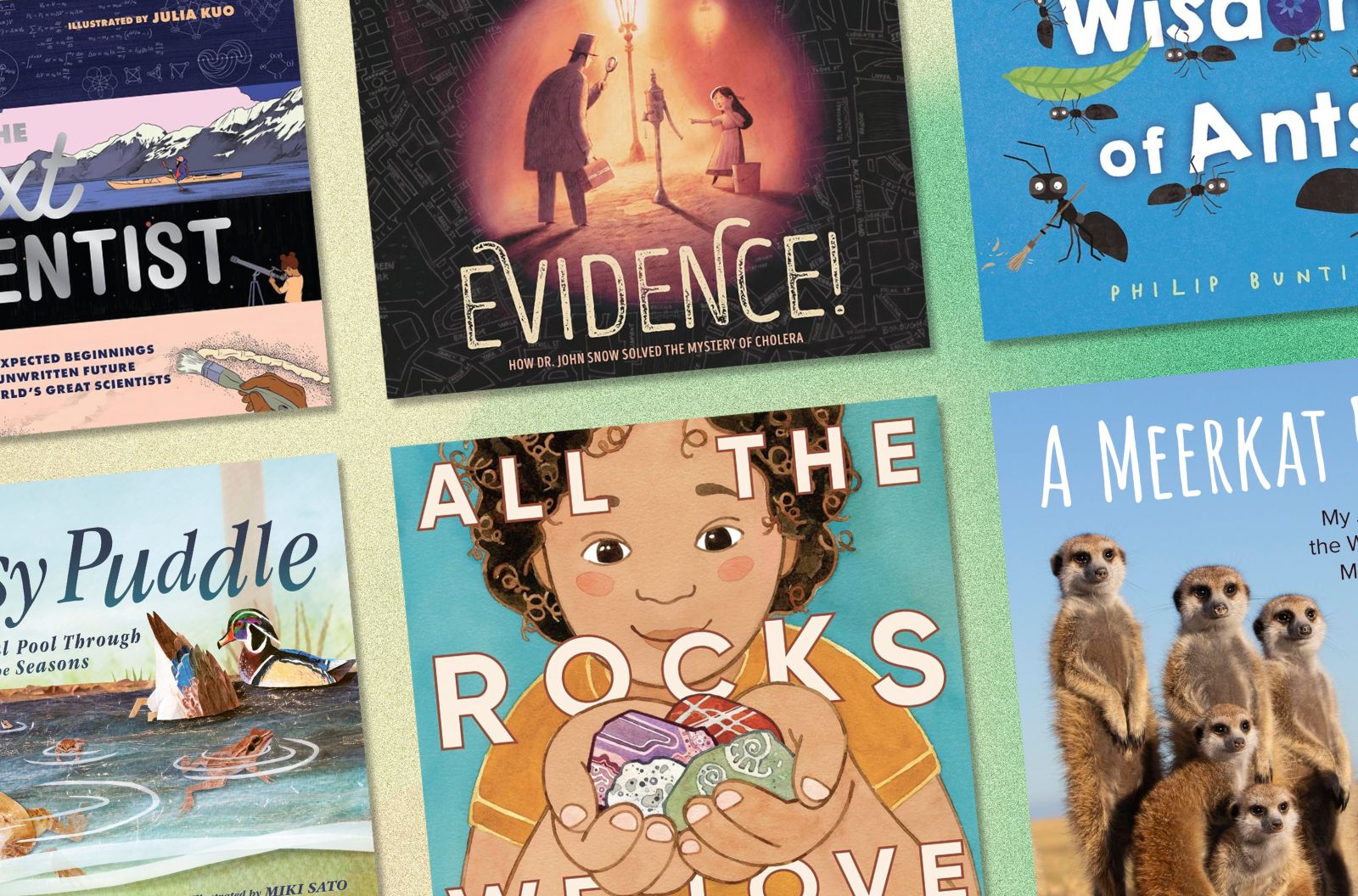
It’s that time of the year when you’re making your list, checking it twice, for gifts that spark a love of science for the kids in your life.
Ira talks with Mahnaz Dar, young readers’ editor at Kirkus Reviews and Carrie Wolfson, collection development librarian at the Boulder Public Library to round up some of the top kids’ science books of 2024 and make recommendations based on listener questions.
When you purchase products through the Bookshop.org links on this page, Science Friday earns a small commission, which helps support our journalism.
Young Readers’ Editor at Kirkus Reviews
“Who says explorers need access to vast forests or deep seas? With this gorgeously crafted guidebook, Clarkson schools youngsters in the art of observology (the study of looking), offers pointers on identifying creepy-crawlies, and lists easily located places where teeny-tiny wildlife can be found; readers will be delighted at the plethora of natural treasures all around them.”
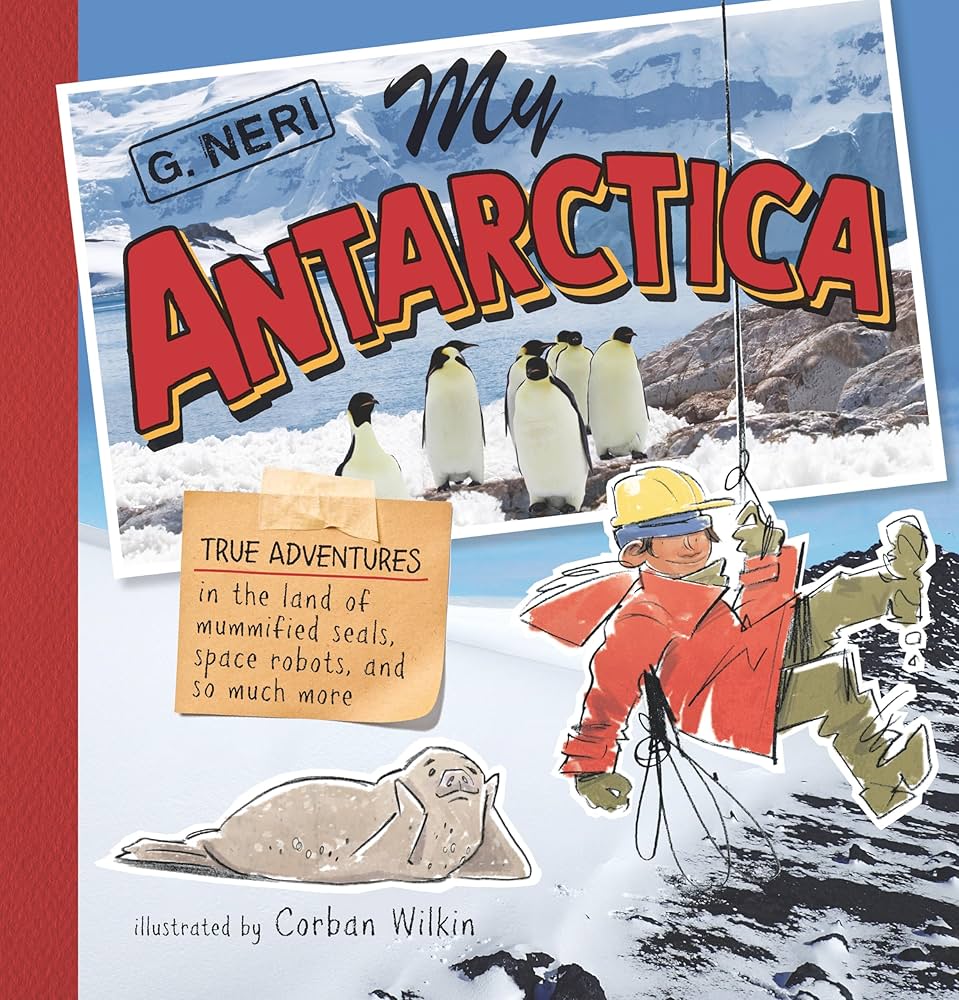 My Antarctica
My Antarctica“Neri documents two months spent on a grant-funded trip to our most frigid continent. Though the author struggled with math and science as a student, he realizes he has a gift for making these topics accessible to others; this is a book that demonstrates that STEM is for truly everyone.”
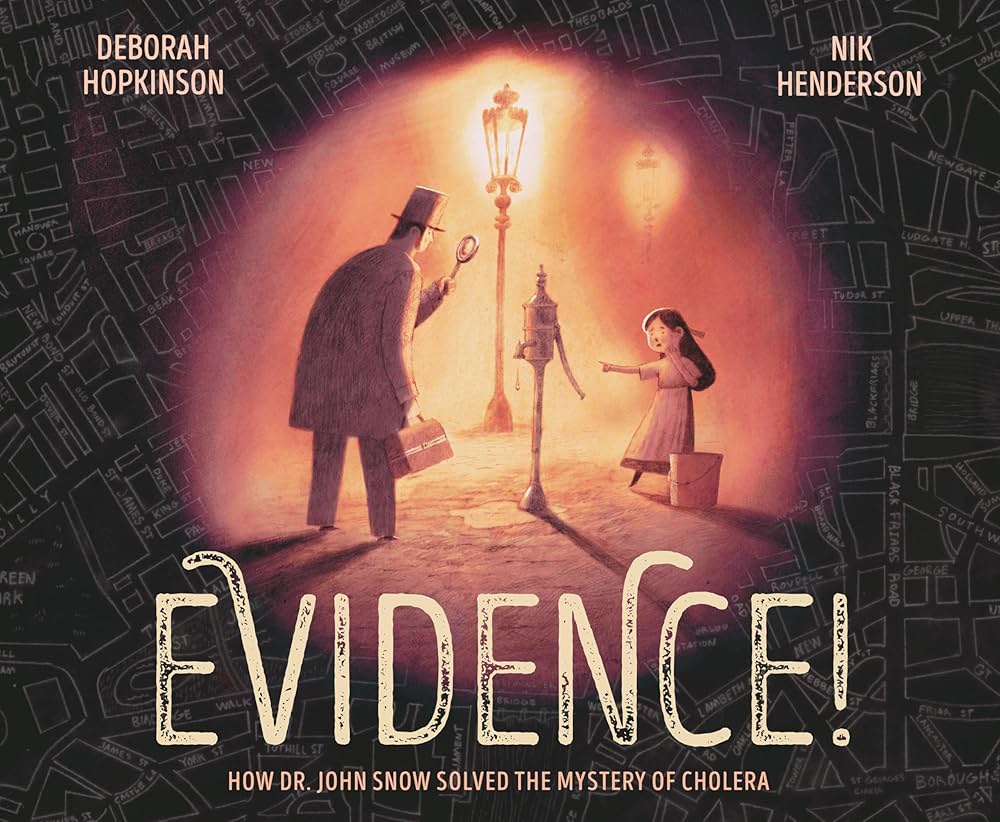 Evidence!
Evidence!“When people started dying of cholera in 19th century London, everyone was convinced there was nothing that could be done—except Dr. John Snow, who relied on logic and good old-fashioned detective work to establish that all the afflicted had access to the same contaminated water pump. Drama, tension, and science in action—this tale has it all.”
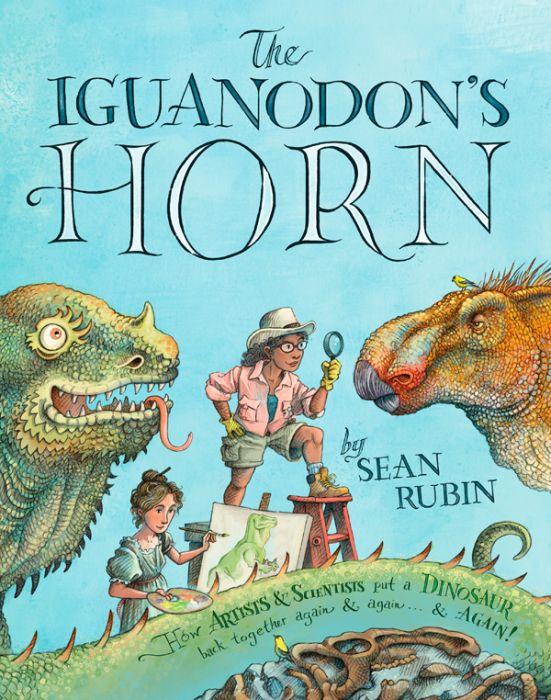 The Iguanodon’s Horn
The Iguanodon’s Horn“When the iguanodon was first discovered, people assumed it had a huge, rhino-like horn atop its nose. Though kids will flock to this book for the striking dino images—and giggle at some of the incorrect assumptions scientists have made about these prehistoric creatures—they’ll also learn an important lesson: Science is a never-ending process, and scientists are constantly making new discoveries.”
“Sweeney follows two siblings as they spend time observing a vernal pool—a puddle formed from rain and melting snow—over the course of a year. With enticing, almost three-dimensional images and lush verse, this is a lovely ode to ecosystems, no matter how seemingly small.”
Collection Development Librarian for Children and Teens at the Boulder Public Library
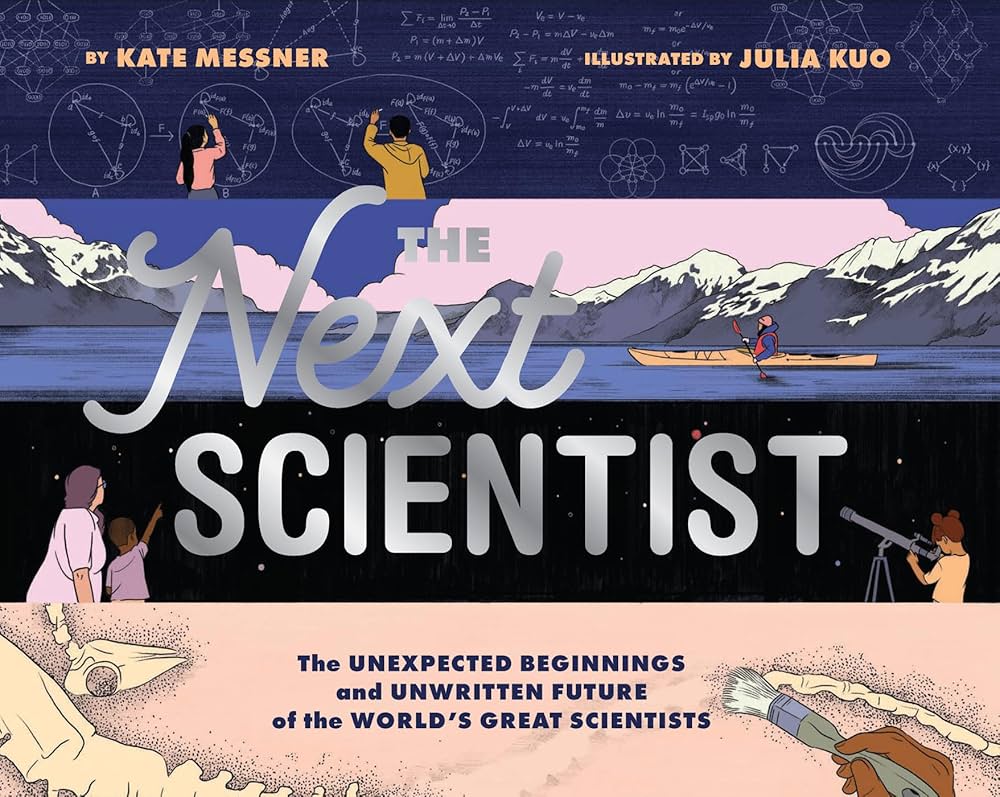 The Next Scientist
The Next Scientist“What were Isaac Newton, Mae Jemison, and Jane Goodall up to as kids? All sorts of things! This affirming, expansive picture book chronicles a diverse group of over 20 scientists and their childhood experiences.”
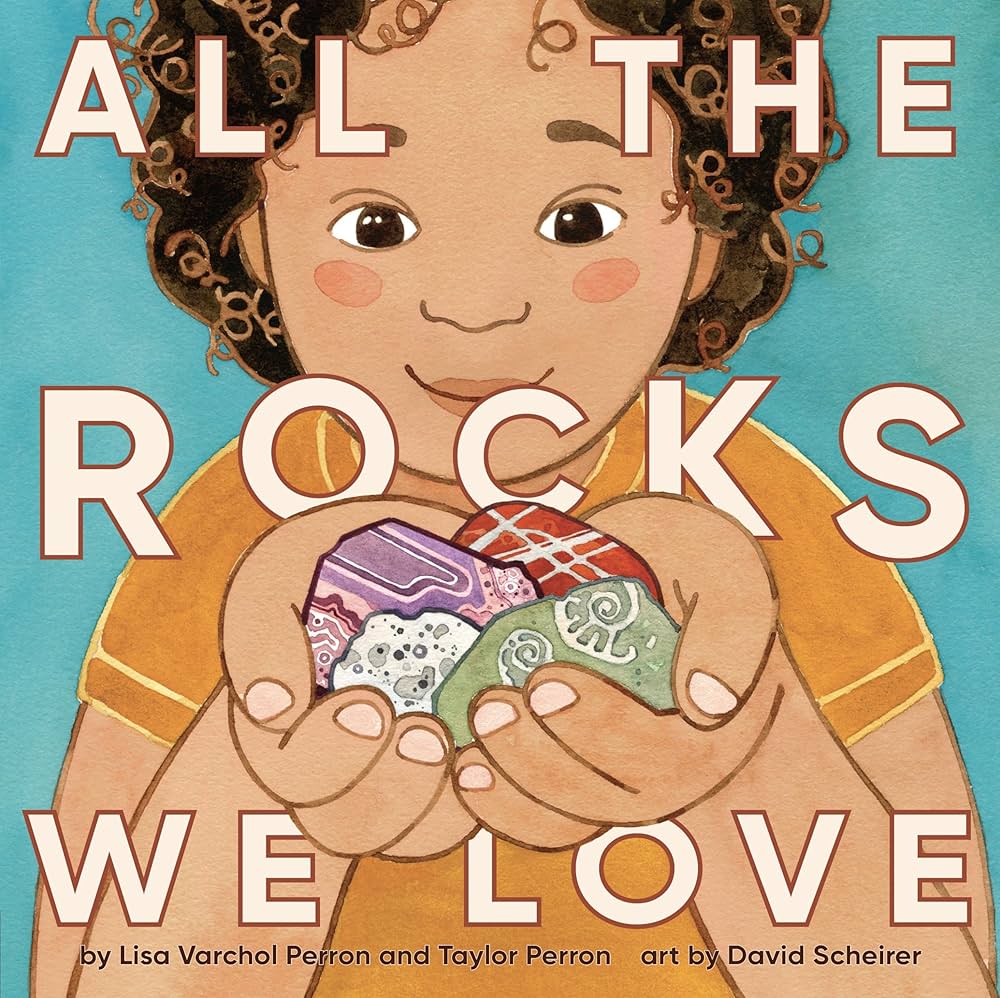 All The Rocks We Love
All The Rocks We Love“This geology-themed picture book, brimming with plucky rhymes and playful jewel tones, is ideal for sharing with the littlest nature explorers. Read the book together to discover different rock varieties like granite, obsidian, and agate then head outdoors to hunt for the real thing!”
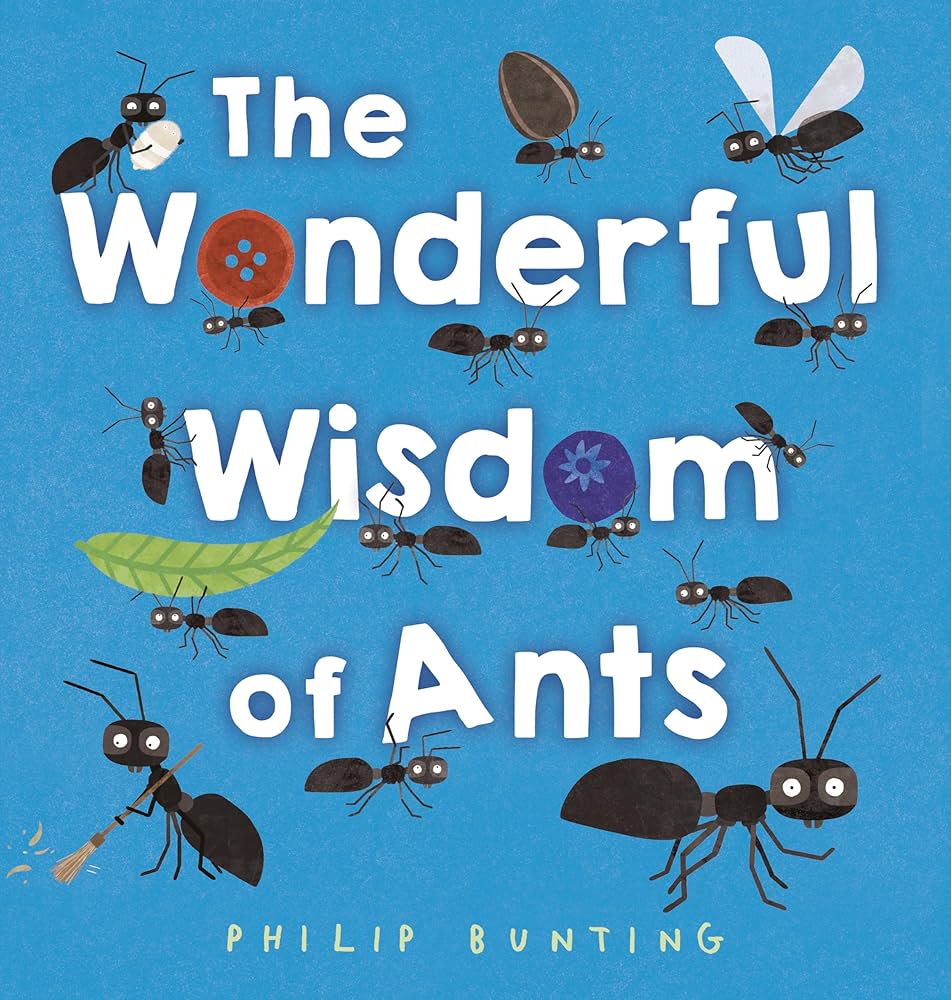 The Wonderful Wisdom of Ants
The Wonderful Wisdom of Ants“The world of ants comes to life in this clever picture book for younger kids. Packed with awe-inspiring facts and sprinkled with humor, it will be a hit with emerging and established bug lovers alike.”
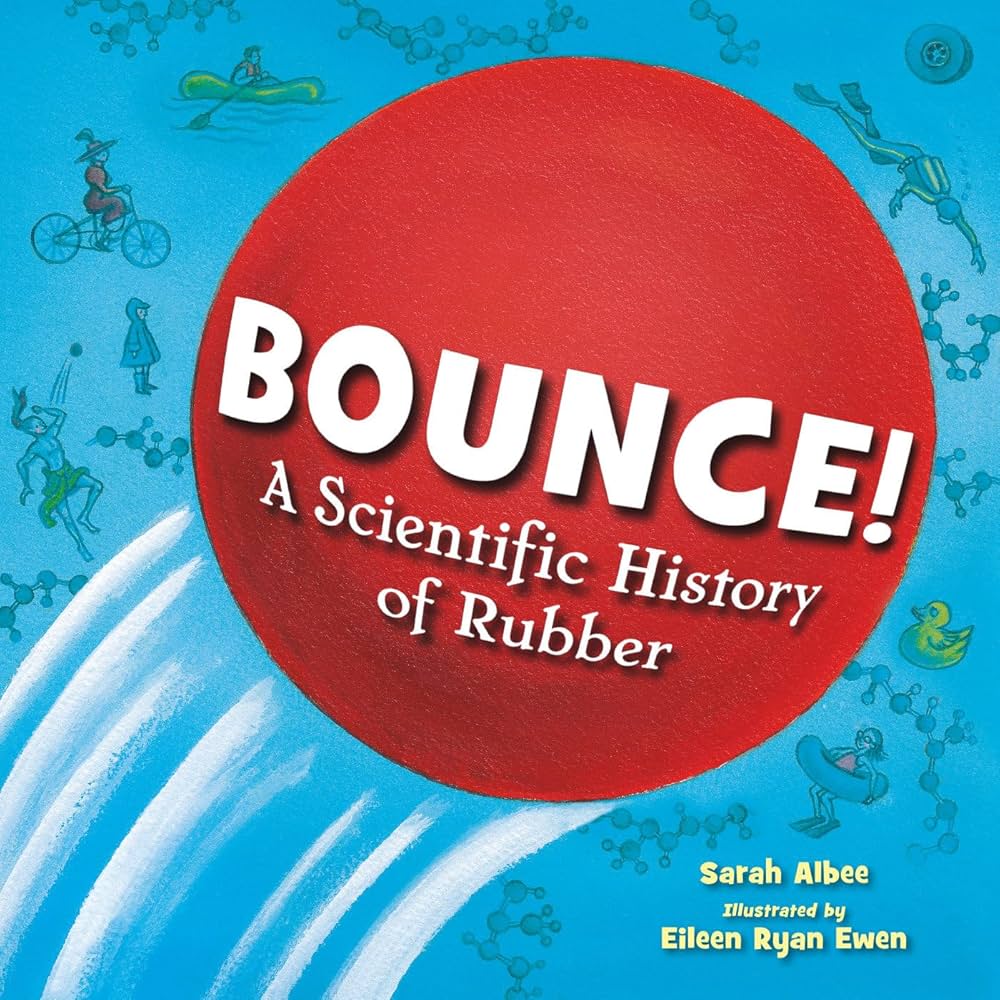 Bounce: A Scientific History of Rubber
Bounce: A Scientific History of Rubber“What would life be like without rubber? From early Indigenous sports to contemporary car tires, rubber’s unique properties have left a mark. This entertaining history mixes great storytelling, comical illustrations, and scientific interludes to create a sophisticated picture book for kid readers.”
“This scrapbook style read is packed with facts, anecdotes, and dozens of irresistible photos of baby meerkats. Kids will delight in the animal shenanigans and chatty diary entries as they get to know a single meerkat family over the course of several day.”
Here are some book recommendations from our guests, as requested by you, our fans and followers!
Kay from Charlottesville, VA requested book ideas for a “13 year old boy who likes looking for critters in streams.” Here’s what Mahnaz and Carrie had to say:
Mahnaz said, “I have a book that’s about lakes… The author is a TikTok creator, and the book has spun off a few TikTok videos. So I feel like it would be a really cool way for this kid to expand his interests a little bit. I think then you could also check out the videos—with some parental supervision!”
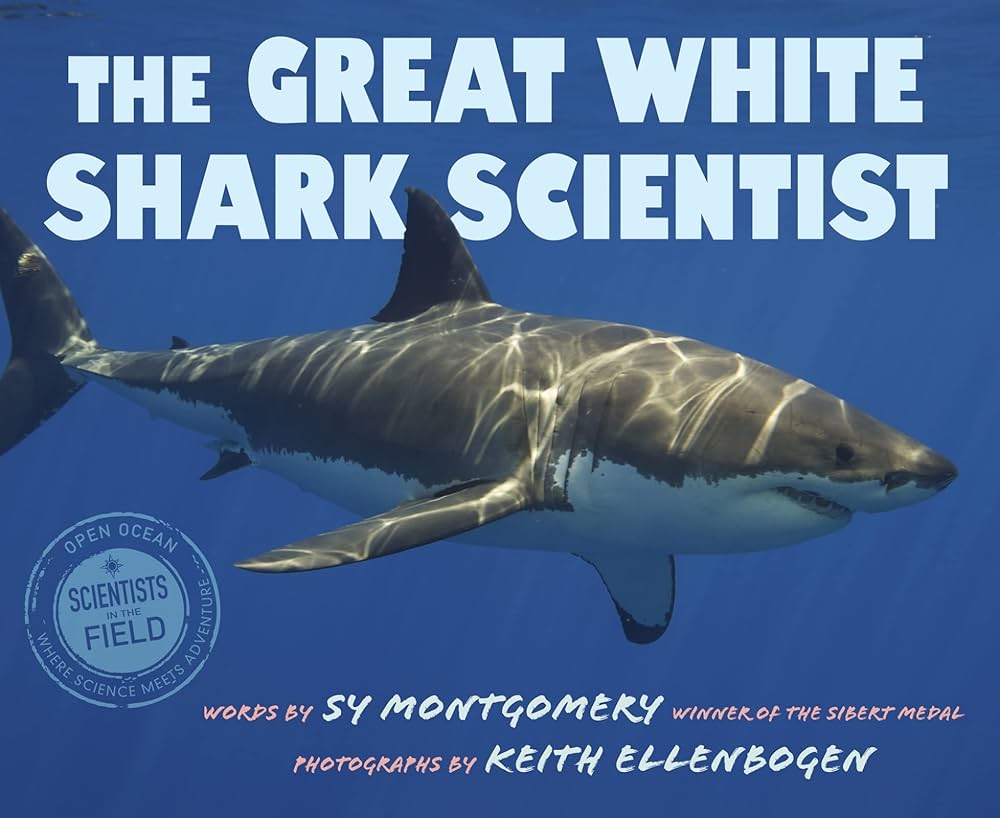 The Scientists in the Field series
The Scientists in the Field seriesCarrie said, “[This] series follows scientists as they’re out in the wild doing science, and there are a number related to marine biology. So for a kid who’s interested in river systems, this [series] has wonderful photographs… and showcases a lot of wonderful scientists.”
Beth from southwestern Ohio said, “The child I’m shopping for is a newborn, and I would like suggestions for books that will plant ideas related to plants and animals, earth and sea… I am looking for something like a series or grouping of books that I could give as successive gifts throughout his first 2-3 years.” Here’s what Carrie had to say:
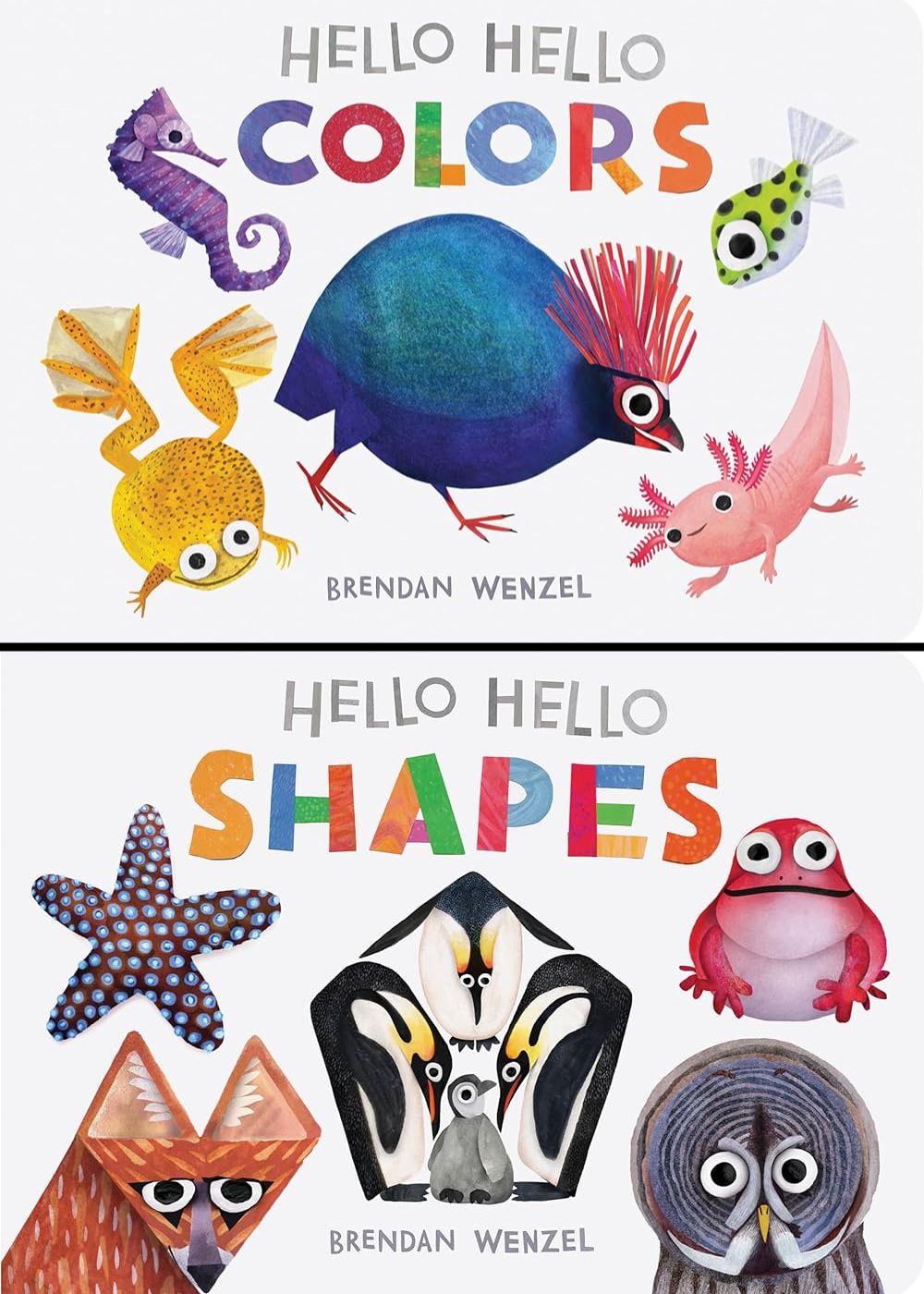 Hello Hello series
Hello Hello seriesCarrie suggested Brendan Wenzel’s Hello Hello series, including Hello Hello Colors, Hello Hello Shapes and Hello Hello Opposites, and said, “These board books feature brilliant, colorful illustrations of real wildlife while introducing key early concepts to young learners. You’ll see everything from a sloth and a cheetah for your opposite books, and then animals of different shapes and sizes and speeds. As the child grows up, a great resource is your local public library. Hundreds of new books are published every year, and library professionals are there to help you find the ones that are a great fit for your family.”
Suzanne P. from Morristown, NJ said, “My son Simon is 11 years old and he’s in sixth grade. He loves math, physics, pottery, and anything to do with plants or gardening. He also loves to swim, sail, and loves listening to Science Friday.” (Thank for being a fan, Simon!) Here’s what Mahnaz and Carrie had to say:
Mahnaz said, “I describe them as Diary of a Wimpy Kid meets good, accurate STEM, because they’re very accessible, they’re fun, and they’re written from the point of view of a young boy who’s writing his own comic. He just takes these really big concepts like volcanoes or the Big Bang Theory and puts them into mixed comparisons that are just going to make a lot of sense to kids.”
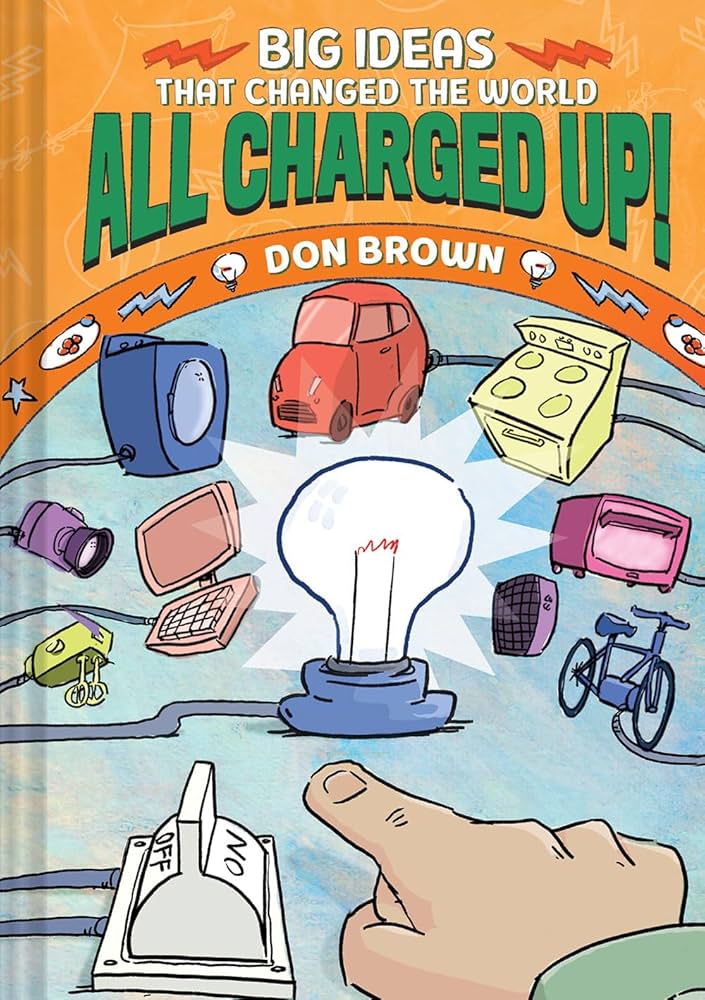 Big Ideas That Changed the World series
Big Ideas That Changed the World seriesCarrie said, “I’m a big fan of the Big Ideas That Changed the World series from Don Brown. These are non fiction comic books that cover some great developments in the history of STEM. The latest one is called All Charged Up!, and it’s about the history of electricity. It goes through the very earliest experiments with electricity, all the way to the modern age, and has wonderful artwork and a scientist leading you through the book. A great one for a creative kid who loves learning about all kinds of topics.”
Cathy from Vancouver, Canada asked for recommendations for a “12-year-old who loves reading and thinks of themselves as “science-y.” Went through a rock phase a couple of years ago, but seems to be drifting to chemistry and biology.” Here’s what Carrie and Mahnaz had to say:
Carrie said, “It’s a longer book for older kid readers that goes through how scientists use ice to look into the history of climate and environment, and analyze those samples to tell us what might be coming or what we can do in our own time. It has a lot of hard science in it for a kid who’s maybe getting into chemistry, but it’s also just really engaging and well told.”
Marni T. from Downers Grove, IL said, “I’m shopping for a 10-year-old girl. She is very creative and loves to sing, draw, paint, write poetry, and cook. She also loves experimenting with cooking, and performing chemistry experiments. We have the Wow in the World books and she loves those!” Here’s what Mahnaz had to say:
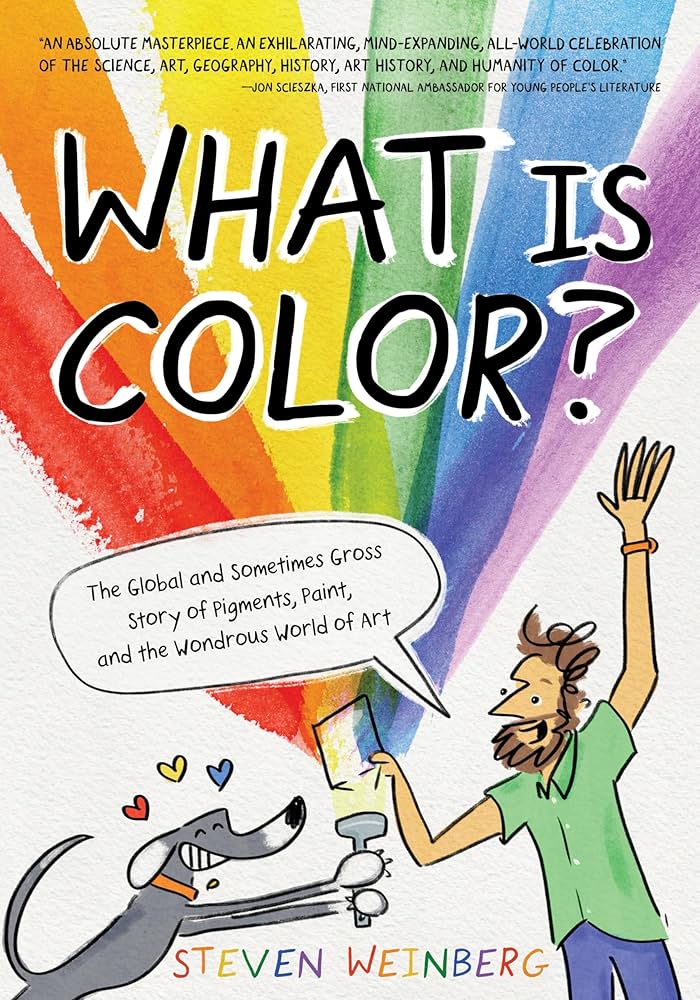 What Is Color?
What Is Color?Mahnaz said, “This one sits really beautifully at the intersection of science, art, even history. It goes into the science of the electromagnetic spectrum, how different pigments were developed, and also how that led to the creation of different artistic works of art. He explains science, he expounds on art from Michelangelo to O’Keefe, even musing on what even is art?”
Lou M. from Boulder, CO said they are “shopping for a 2nd grade girl with interests in plants, rocks, experiments. Good observer. She has dyslexia, so the book needs a combo of illustrations and not-too-long text.” Here’s what Carrie and Mahnaz suggest:
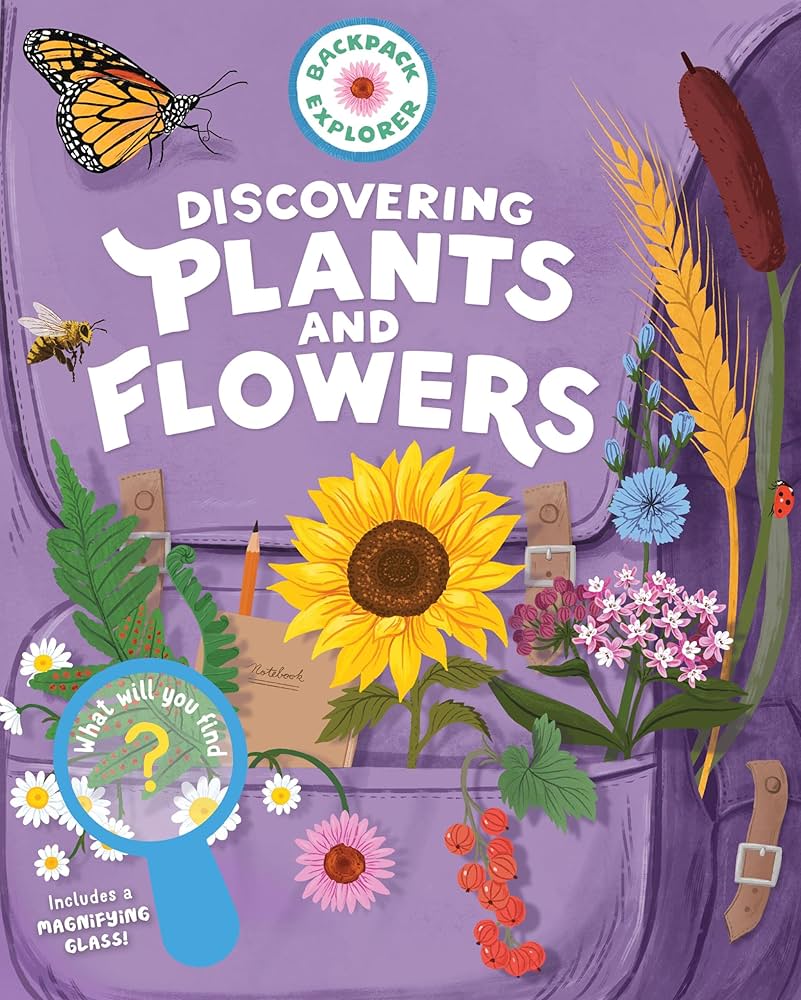 Backpack Explorer: Discovering Plants and Flowers
Backpack Explorer: Discovering Plants and FlowersCarrie said, “This cleverly designed book for early elementary readers is part encyclopedia and part activity book. Content ranges from identifying leaf types to outdoor scavenger hunts for colors and smells. The browsable layout includes pops of simple text plus longer chunks readers can tackle at their own speed. A sturdy cover, sticker badges, and a combination of photos and illustrations make this an ideal companion for outdoor adventures.”
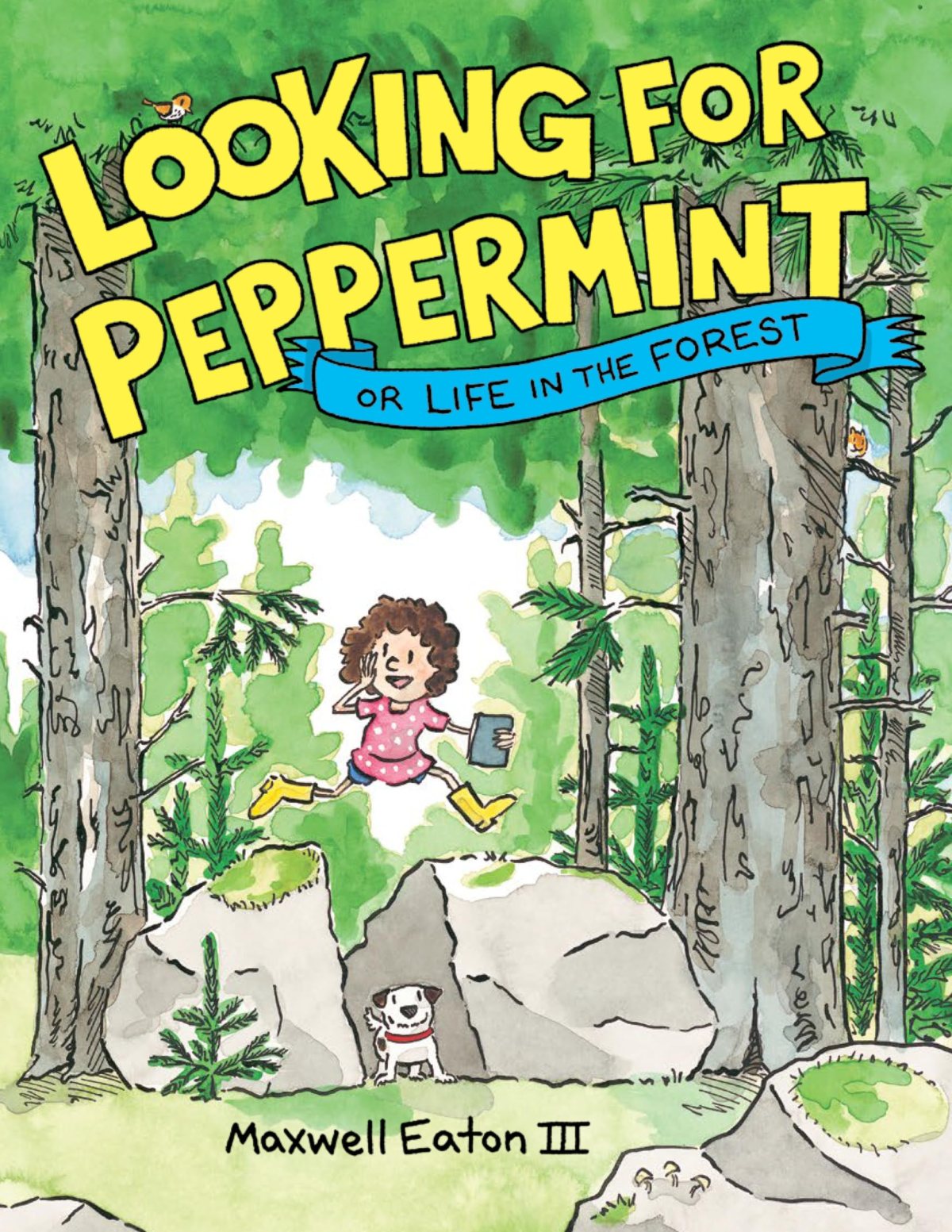 Looking for Peppermint: Or Life in the Forest
Looking for Peppermint: Or Life in the ForestMahnaz said, “This picture book, presented in comic book-like panels with speech bubbles, follows a young child looking for a lost dog in the woods. Along the way, the author peppers the narrative with fun facts about trees, rocks, and more.”
Carl D. from San Jose, CA said, “My neighbor has two great kids who are home schooled. The 10-year-old girl is taking horseback riding lessons and loves animals. She wants to be a veterinary doctor.” Here’s ideas from Mahnaz and Carrie:
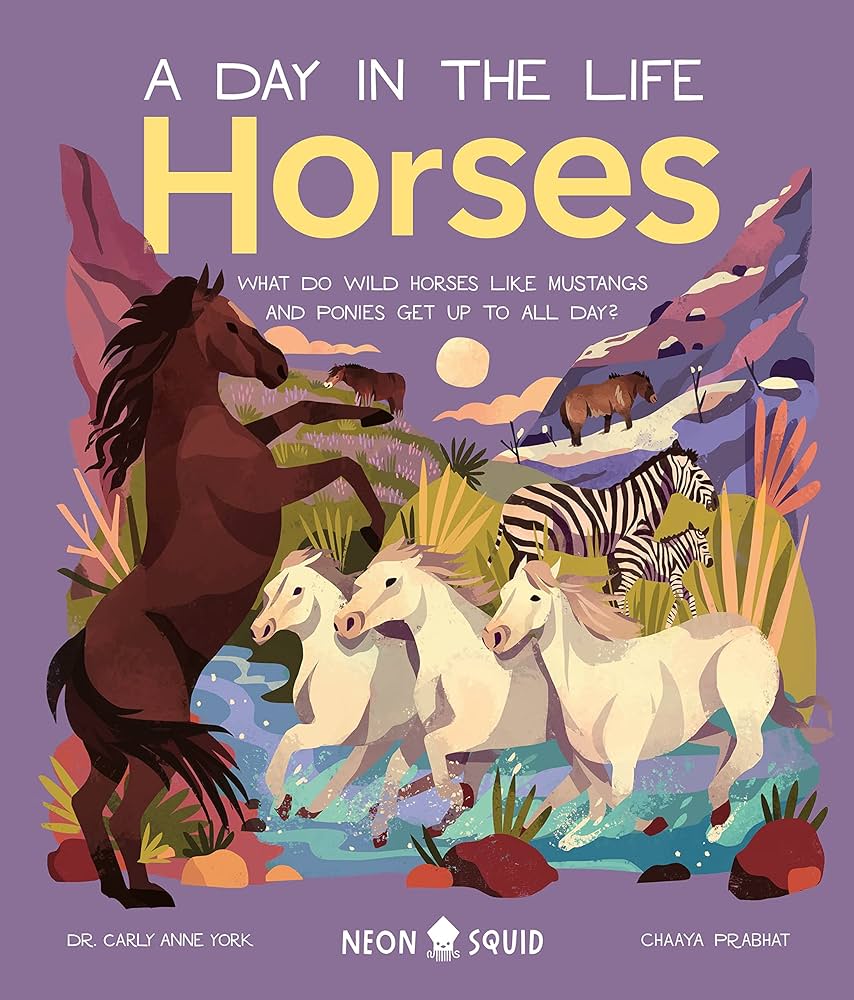 Horses (a Day in the Life)
Horses (a Day in the Life)Mahnaz said, “Structured as a “day in the life adventure,” with each hour devoted to a different kind of horse, this captivating work—part of the Day in the Life series—explores how members of the horse family spend their time in the wild. Animal lovers will want to check out other titles in this series, which explore big cats, birds, frogs, and more.”
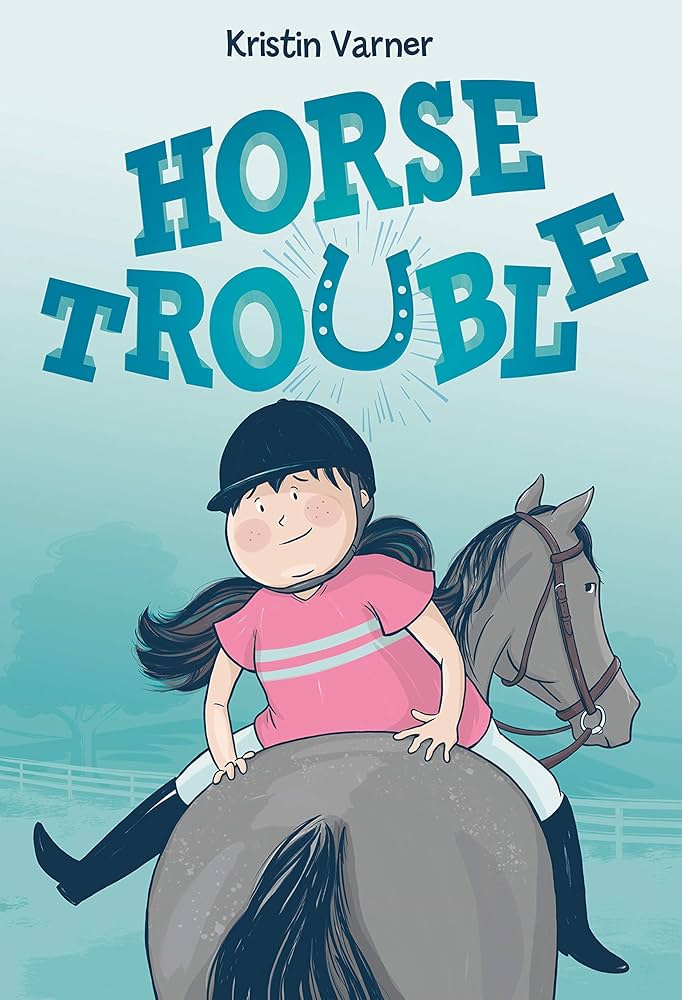 Horse Trouble
Horse TroubleCarrie said, “This graphic novel follows Kate, a horse-loving 12-year-old, as she navigates the ups and downs of tween friendship, body image, and riding lessons at the local stable. Equine facts and vocabulary are sprinkled throughout, and the relatable illustrations will be a hit with older kid readers.”
Dylan W. from Berkeley, CA asks, “My nephew is six and when we go for hikes, all he wants to do is look at fungi! Do you have any book recs for a young mushroom lover?” Here’s some suggestions Carrie and Mahnaz:
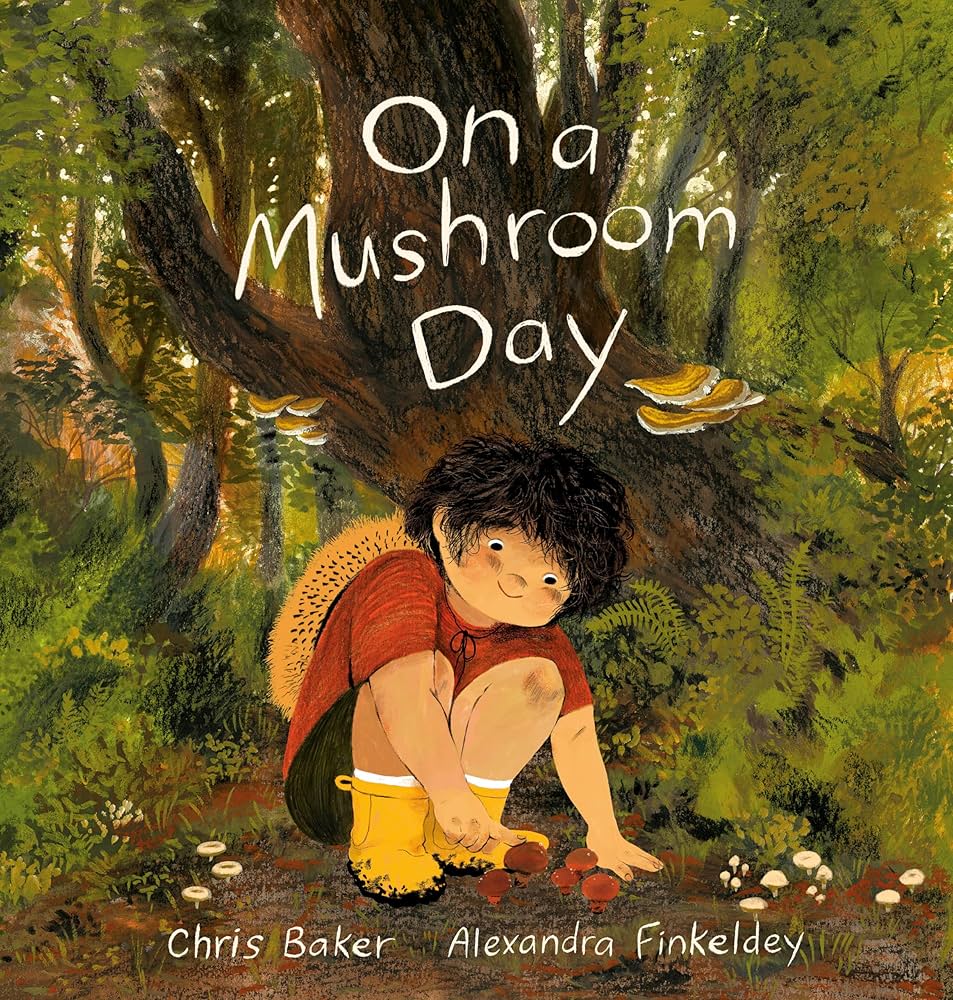 On Mushroom Day
On Mushroom DayBoth Carrie and Mahnaz recommended this read! Mahnaz said, “A parent and child hike through the woods, observing mushrooms. Baker’s melodic text is filled with musings on mushrooms, while the backmatter offers more in-depth information on the species depicted; Finkeldey’s illustrations are sumptuous.”
Carrie said, “Friendly fungi illustrate mushroom attributes in this playful nonfiction picture book. Young mushroom enthusiasts will learn the names of real varieties—“Green Elfcup,” “Octopus Stinkhorn,” and “Earthstar”—that are practically poetry. Mushroom facts and safety tips conclude this delightful creative title.”
Sara B. from Portland, OR is shopping for a “3.5-year-old sensory seeker who loves puzzles, animals, nature, bugs, and process art.” Here’s what Carrie thought might be a good pick:
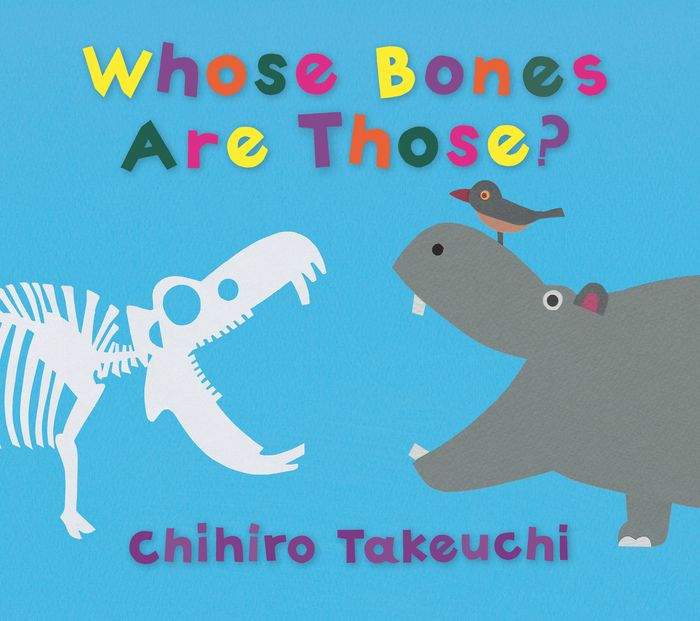 Whose Bones Are Those?
Whose Bones Are Those?Carrie said, “This interactive picture book presents cut-paper illustrations of animal skeletons and invites children to guess the matching critter. A terrific fit for an animal-loving puzzle enthusiast, pair it with the follow-up, Whose Dinosaur Bones Are Those? for an entertaining and informative gift.”
Robert N. from Seattle, WA said, “My 9-year-old loves to design and experiment at home. I’m looking for a STEM book specifically for girls that has well explained and illustrated steps for her to follow and activities that cover lots of topics, not just chemistry or engineering. A real “STEM for girls” book!” Here’s what Carrie and Mahnaz suggest:
Carrie said, “This how-to book features STEM projects, complete with step-by-step illustrations, on a range of topics. Profiles of different school-age girls involved in STEM introduce each activity, making this title a fresh find in a crowded field of project books.”
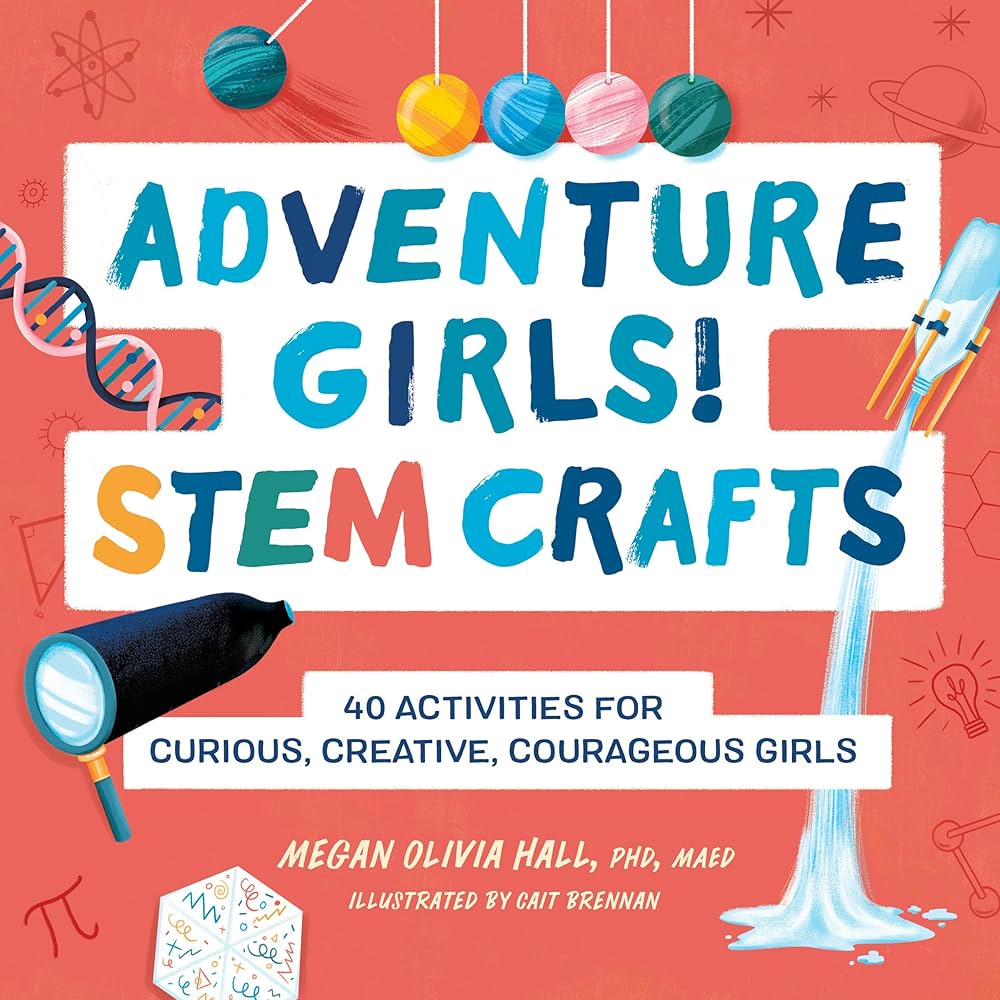 Adventure Girls! STEM Crafts
Adventure Girls! STEM CraftsMahnaz said, “The activities in this volume run the gamut, from creating a DNA garland to making a “bounce game box” to test gravity. Profiles of prominent women in STEM round out this empowering work.”
Shoshannah B. from Brooklyn, NY asked for some recommendations for “My nephew, who is 4 years old and loves dinosaurs and sea creatures.” Here’s what Mahnaz and Carrie had to say:
Carrie said, “Gorgeous color photos of all kinds of octopi will entrance young fans in this winning title from National Geographic Kids. A playful layout and rich language round out the fun, making this a perfect fit for adult-kid shared reading.”
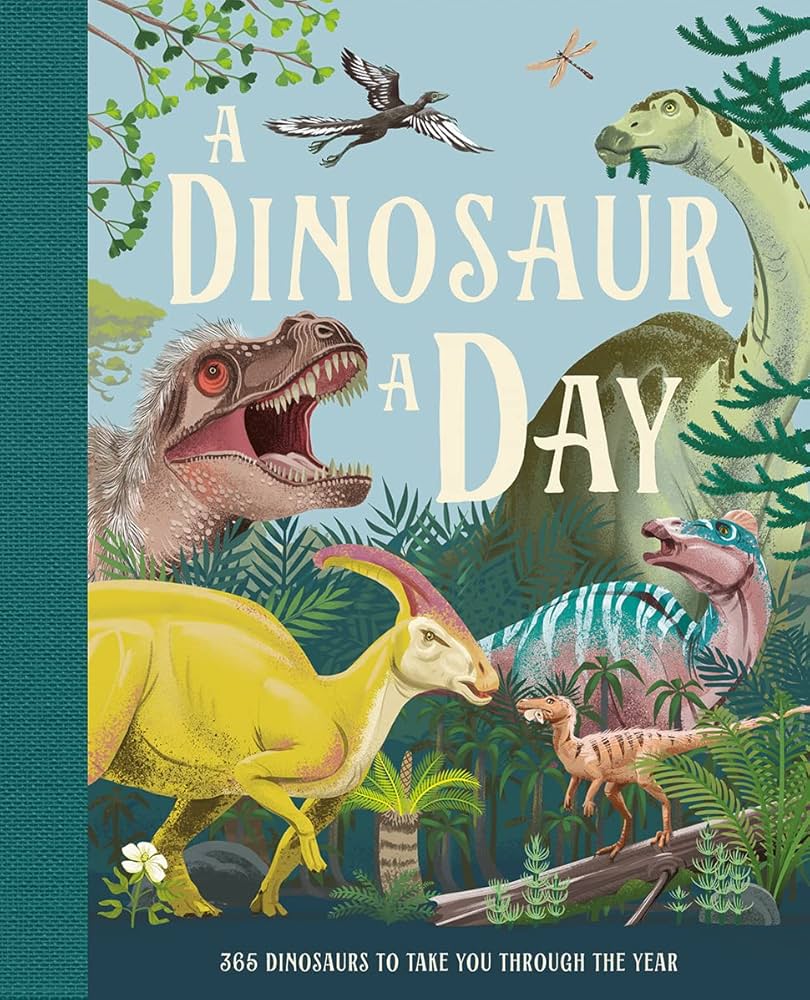 A Dinosaur a Day
A Dinosaur a DayMahnaz said, “Dino lovers, gather around! Smith offers a roundup of 366 prehistoric creatures, one for each day of the year. Brief descriptions and stats are paired with eye-catching visuals; readers will eagerly page through to find their birthday dino.”
Mahnaz Dar also mentioned Oliver’s Great Big Universe by Jorge Cham (which was one of her picks for our 2023 best science books for kids round-up).
Carrie Wolfson also spoke about the Who Would Win? series from Scholastic.
Mahnaz Dar is Young Readers’ Editor at Kirkus Reviews in New York, New York.
Carrie Wolfson is a collection development librarian at the Boulder Public Library in Boulder, Colorado.
IRA FLATOW: This is Science Friday. I’m Ira Flatow.
It’s that time of the year when you’re making your list, checking it twice for science gifts for the kids in your life, and my next guests are here to help. Their picks for some of the top kids science books of 2024 and make recommendations, yes, based on questions that you, our listeners, have shared with us.
Let me introduce them. Mahnaz Dar, young readers’ editor at Kirkus Reviews in New York, and Carrie Wolfson, collection development librarian at the Boulder Public Library in Boulder, Colorado. Welcome to Science Friday.
MAHNAZ DAR: Great to be here.
CARRIE WOLFSON: Thank you. Good to be here.
IRA FLATOW: Nice to have you, of course. OK, let’s go right to these because I know folks are waiting to hear your recommendations. Broadly speaking– let me ask both of you, and Mahnaz, you can go first. What makes a good kid’s science book?
MAHNAZ DAR: Obviously, you want something that’s going to be informative, that’s going to be accurate. But I think it’s also important to have a good entry point, something that’s going to be original, grab a kid’s attention, and I feel like humor is often a really good way to do that. We’ve been seeing a lot of books with graphic formats, just a way to spice up the information.
I remember when I was a little kid, I had a lot of science books in the library, but they didn’t quite have the fun that a lot of these books now have, which I think is such a great thing about them, nonfiction and science in particular.
IRA FLATOW: Yeah. Carrie, you agree?
CARRIE WOLFSON: Yeah, absolutely. There’s just such a wonderful array of choices and creative formats out there now that have really exploded over the last decade or so. One of the things that you might think about is what kind of kid you’re buying for. There are a bunch of different kinds of nonfiction for children. You’ve got sort of active nonfiction. That’s like your cookbooks or your outdoor exploration or your craft books. So if you have a kid who’s really into creating and making and doing, that might be a good format for them.
You also have more sort of literary nonfiction where it might have a really great narrative. It might use the same kinds of things that a fiction book does. So the characters will be brought to life. It will be told as a linear story. So if a child really enjoys that kind of reading, think about that. And then we also have browsable stuff where you can just hop in anywhere, and a kid can come back to it again and again and experience the book that way.
IRA FLATOW: It’s been my experience as a father and a grandfather that there are books that you love as an adult, but the kids don’t seem to really appreciate it as much as you do, Carrie.
CARRIE WOLFSON: Yeah, absolutely. Some of a kid’s favorite nonfiction books might be ones adults might turn their noses up at a little bit. But like Mahnaz is saying, these are often ones that are really fun and engaging. So series like Who Would Win? which tracks animal characteristics. Sometimes it’s even books of ghost stories or shipwrecks, that kind of thing. But at the end of the day, the best book for a kid is the book that they’re going to read and enjoy.
IRA FLATOW: All right, let’s get right into your picks. And, Mahnaz, you go first. Give me your first pick, please.
MAHNAZ DAR: Yeah so one book that I love is called The Observologist– A Handbook for Mounting Very Small Scientific Expeditions by Giselle Clarkson. And this is a book for young explorers. And you might think, well, I don’t have access to the rainforest or any kind of rural setting, but you don’t need to. You can live anywhere and go on little expeditions. The book teaches kids about something called observology, the study of looking, and it offers them pointers on identifying bugs that they might find and telling them where they might find them– on the pavement outside, in the garden, even behind the drapes in the living room.
And it’s just so hands on. I feel like a kid will spend hours with it. They can read it straight through, or they can just pick a chapter. And it’s the kind of book that’s really going to stay with you. I think you read this, and then you just become a more observant person in all of your life, really.
IRA FLATOW: Right. And, Carrie, give me your first book.
CARRIE WOLFSON: Yeah, my first pick is called The Next Scientist by Kate Messner, illustrated by Julia Kuo. This is one of a series of books, and it is a chronicle of what famous scientists were up to as children. So we have folks like Isaac Newton and Mae Jemison and Jane Goodall but also a ton of scientists from across time and the globe that we might not have heard from before, and it’s just a stunning picture book. It’s got beautiful colors that fill the whole page. And it bounces back and forth between scenes of scientists as kids kind of messing around, maybe taking things apart, maybe building things, maybe doing sports or doing art, and then connects those scenes to how scientists use those traits in adulthood.
So it’s a great one for showing the diversity of the scientific community and for showing kids kind of models of what they might look like as scientists themselves, and it’s also really fun. Great engaging pictures and lots to share with kids and adults.
IRA FLATOW: Yeah. Mahnaz, you’re up next.
MAHNAZ DAR: Yeah, so I’ve actually got a book that pairs really well with that one. It’s for a slightly older audience, My Antarctica– True Adventures in the Land of Mummified Seals, Space Robots, and so Much More, by G. Neri, illustrated by Corban Wilkin.
And so the author, G. Neri, spent two months on a grant-funded trip to Antarctica, and he just was blown away by all the things he came across– a mummified seal, like in the title. He talks about how you dispose of poop in Antarctica. You’ve got to dispose of it safely and bring it back. And I think what really comes through is less the information– which is great– and more the idea that, really, STEM is for everyone because the author, G. Neri, struggled with science and math as a kid, and he didn’t see, as a person of color, a lot of scientists or explorers who looked like him. But he realized on the trip that he had this great gift for translating science into stories and captivating other kids and showing them the beauty of science, and it’s a book that really shows you that STEM is for everyone. Science is for all of us. Even if you’re not going to become a scientist, you can still love science in your own way.
IRA FLATOW: I’m putting that on my list because as someone who’s been to Antarctica, I want to see what that book is all about.
MAHNAZ DAR: Oh my God, so you can actually fact check that one.
IRA FLATOW: Especially the part about the poop. I remember that one.
Let’s move on to some of the requests we’ve received from our listeners. Kay from Charlottesville, Virginia, is looking for a book for a 13-year-old boy who likes looking for critters in streams. What would you recommend? Mahnaz, you’ve got anything for our listener?
MAHNAZ DAR: I do. I have a book that’s about lakes. It’s called Spooky Lakes by Geo Rutherford. And the author is a TikTok creator, and the book has spun off of these TikTok videos. And it’s just all these really cool stories about lakes all over the world. So I feel like it would be a really cool way for this kid to expand his interests a little bit, and it’s got the kind of creepy element.
And I think then you could also check out the videos with some parental supervision, if you wanted.
IRA FLATOW: Carrie, you have a book, The Scientists in the Field series, right?
CARRIE WOLFSON: I do, but I can attest to Mahnaz’s suggestion. That one is really popular at our library, doing really well.
So I would recommend The Scientists in the Field series. First of all, looking for critters in streams just sounds like a wonderful, wonderful activity, so that sounds really fun. The Scientists in the Field series follows scientists as they’re out in the wild doing science, and there are a number related to marine biology. So for a kid who’s maybe interested in river systems, this has wonderful photographs, lots of really interesting storytelling, and showcases a lot of wonderful scientists.
IRA FLATOW: Sounds great. Sounds great. Our next question from our listeners is from Beth from southwestern Ohio. Here it is. “The child is a newborn, and I would like suggestions for books that will plant ideas in his little head that are related to plants and animals, both earth and sea. The baby shower included a call for books, so there are already many. Therefore, I am looking for something like a series or grouping of books that I could give as successive gifts off and on throughout his first two to three years.” Carrie, any suggestions?
CARRIE WOLFSON: Yeah, one of my favorite new board-book series this year is from the Caldecott Honor winner Brendan Wenzel. He has a series of board books called Hello, Hello Colors, Hello, Hello Shapes, Numbers, and Opposites, and they all feature brilliant, colorful illustrations of real wildlife but also introduce those early concepts to young learners. So you’ll see everything from a sloth and a cheetah for your opposite books and then animals of all kinds of different shapes and sizes and speeds. So recommend that one.
And then I’d also recommend, as that child gets older, to really use your public library. The folks there are there to know books, get to know your kid, and find stuff that really supports your family throughout a child’s reading life and lifelong. So definitely get to know your local library professionals.
IRA FLATOW: Sounds great. All right, our next question comes from Suzanne P. from Morristown, New Jersey, and let’s take a listen.
SUZANNE P.: My son Simon is 11 years old, and he’s in sixth grade. He loves math, physics, pottery, and anything to do with plants or gardening. He also loves to swim, sail, and loves listening to Science Friday. Any book suggestions you have would be very welcome. Thanks.
IRA FLATOW: You’re welcome. Thanks for that call. Mahnaz, suggestion?
MAHNAZ DAR: Yeah, the author, Jorge Cham, has a really great– well, it’s a new series now. Last year, he had one called Oliver’s Great Big Universe, and now there’s a sequel, Oliver’s Great Big Universe– Volcanoes Are Hot! And it’s kind of I describe them as Diary of a Wimpy Kid meets good, hard, accurate STEM because they’re very accessible. They’re fun. They’re written from the point of view of a young boy who’s writing his own comic. And he just takes these really big concepts like volcanoes or the big bang theory and puts them into– makes comparisons that are just going to make a lot of sense to kids. And I think this kid sounds like a really fun, creative child, and I think he’d get a kick out of Oliver.
IRA FLATOW: Yeah. Carrie?
CARRIE WOLFSON: Yeah I’m a big fan of the Big Ideas That Changed the World series from Don Brown. These are nonfiction comic books that cover some great developments in the history of STEM. The latest one is called All Charged Up, and it’s about the history of electricity. And it goes through the very earliest experiments with electricity all the way to the modern age and has wonderful artwork and a sort of scientist leading you through the book. And again, a great one for a creative kid who loves learning about all kinds of topics.
IRA FLATOW: That was my first experience with science books was electricity. It was just fascinating stuff, and I think it’s a way to draw people in. It’s really good.
CARRIE WOLFSON: Absolutely.
IRA FLATOW: This is Science Friday from WNYC studios.
Our next question is from Cathy from Vancouver, Canada, who says, a “12-year-old who loves reading and thinks of themselves as science-y. Went through a rock phase a couple of years ago but seems to be drifting to chemistry and biology.” Carrie, what do you think?
CARRIE WOLFSON: Yeah, my pick for this reader is Frozen in Time– What Ice Cores Can Tell Us About Climate Change. This one is by Carmella Van Vleet, and it is a longer book for kind of older kid readers that goes through how scientists use ice to look into the history of climate and environment and analyze those samples to tell us what might be coming or what we can do in our own time. So it has a lot of hard science in it for a kid who’s maybe getting into chemistry but is also just really engaging and well told. So recommend that one for Cathy’s 12-year-old.
IRA FLATOW: Now, what’s interesting is that Cathy said they went through a rock phase a couple of years ago. Carrie, any suggestions for geology lovers?
CARRIE WOLFSON: Absolutely. I’m so glad you asked. One of my other picks for the best STEM books of 2024 for kids or my favorites is called All the Rocks We Love. It’s by Lisa Varchol Perron and Taylor Perron, illustrated by David Scheirer. This one is going to be great for younger kids, and it is a wonderful overview of different kinds of rocks. There are just stunning watercolors that show us some rocks up close, and then it has illustrations of kids in a ton of different natural environments, from rural areas to urban parks to suburban neighborhoods, exploring rocks and discovering these in their environment. So it would be a great one to pair with an outdoor adventure and perfect for those young kids who are seeking treasures outside and being little scientists themselves.
IRA FLATOW: I’m getting that one for myself.
CARRIE WOLFSON: You absolutely should. It’s wonderful. And the authors are a couple. They’re actually a professional poet and a professional geologist. So really great knowledge behind that.
IRA FLATOW: Wow, science and the arts, something we love here.
Marnie T. From Downers Grove, Illinois, asks, “I’m shopping for a 10-year-old girl. She’s very creative, loves to sing, draw, paint, write poetry, and cook. She also loves experimenting with cooking and performing chemistry experiments. We have the Wow in the World books, and she loves those.” Mahnaz, suggestion?
MAHNAZ DAR: Yeah, I’ve got one called What Is Color? The Global and Sometimes Gross Story of Pigments, Paint, and the Wondrous World of Art by Steven Weinberg. This one sits really beautifully at the intersection of science, art, even history. So I think it’s a really great book for our 10-year-old girl who seems like a real renaissance girl. It goes into the science of the electromagnetic spectrum, how different pigments were developed and also how that led to the creation of different artistic works of art.
And it’s also a really funny book. The author inserts himself as a character as the narrator, and he has this really funny commentary. He explains science. He expounds on art from Michelangelo to O’Keeffe, even musing on, what even is art? So I think this is a really good one.
IRA FLATOW: And that’s about all the time we have for now. Thank you so much to Mahnaz Dar, young readers’ editor at Kirkus Reviews based in New York, and Carrie Wolfson, collection development librarian at the Boulder Public Library in Boulder, Colorado.
MAHNAZ DAR: Thank you so much.
CARRIE WOLFSON: Thank you. Good to be here.
IRA FLATOW: And if you need a specific type of kid’s science book, Carrie and Mahnaz will be on hand for a few more recommendations during the upcoming week. So you can go to sciencefriday.com/kidsbooks and find out how to send us info for the kid on your list. Yeah, and to read their full list of their favorite kids books from last year, we have that all there up on our website.
Copyright © 2024 Science Friday Initiative. All rights reserved. Science Friday transcripts are produced on a tight deadline by 3Play Media. Fidelity to the original aired/published audio or video file might vary, and text might be updated or amended in the future. For the authoritative record of Science Friday’s programming, please visit the original aired/published recording. For terms of use and more information, visit our policies pages at http://www.sciencefriday.com/about/policies/